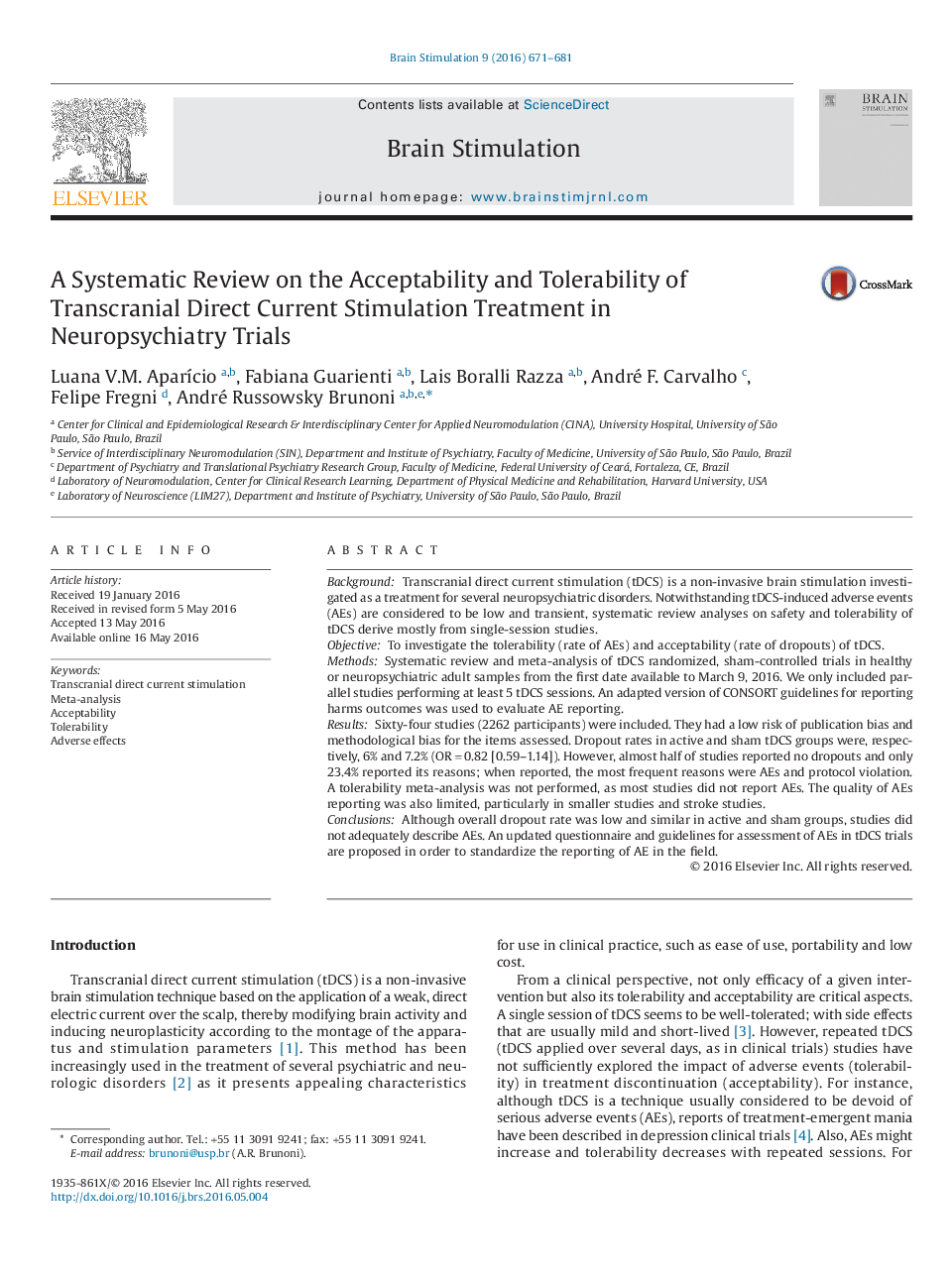| کد مقاله | کد نشریه | سال انتشار | مقاله انگلیسی | نسخه تمام متن |
|---|---|---|---|---|
| 3038691 | 1406330 | 2016 | 11 صفحه PDF | دانلود رایگان |
• We investigated the tolerability and acceptability of tDCS in clinical trials.
• Sixty-four studies (n = 2262 subjects) were included in our systematic review and meta-analysis.
• Drop-out rate was similar in active (6%) and sham (7.2%) groups.
• The quality of AEs reporting was limited, particularly in smaller trials and stroke studies.
• An updated questionnaire and guidelines for assessment of AEs in tDCS trials are proposed.
BackgroundTranscranial direct current stimulation (tDCS) is a non-invasive brain stimulation investigated as a treatment for several neuropsychiatric disorders. Notwithstanding tDCS-induced adverse events (AEs) are considered to be low and transient, systematic review analyses on safety and tolerability of tDCS derive mostly from single-session studies.ObjectiveTo investigate the tolerability (rate of AEs) and acceptability (rate of dropouts) of tDCS.MethodsSystematic review and meta-analysis of tDCS randomized, sham-controlled trials in healthy or neuropsychiatric adult samples from the first date available to March 9, 2016. We only included parallel studies performing at least 5 tDCS sessions. An adapted version of CONSORT guidelines for reporting harms outcomes was used to evaluate AE reporting.ResultsSixty-four studies (2262 participants) were included. They had a low risk of publication bias and methodological bias for the items assessed. Dropout rates in active and sham tDCS groups were, respectively, 6% and 7.2% (OR = 0.82 [0.59–1.14]). However, almost half of studies reported no dropouts and only 23.4% reported its reasons; when reported, the most frequent reasons were AEs and protocol violation. A tolerability meta-analysis was not performed, as most studies did not report AEs. The quality of AEs reporting was also limited, particularly in smaller studies and stroke studies.ConclusionsAlthough overall dropout rate was low and similar in active and sham groups, studies did not adequately describe AEs. An updated questionnaire and guidelines for assessment of AEs in tDCS trials are proposed in order to standardize the reporting of AE in the field.
Journal: Brain Stimulation - Volume 9, Issue 5, September–October 2016, Pages 671–681
